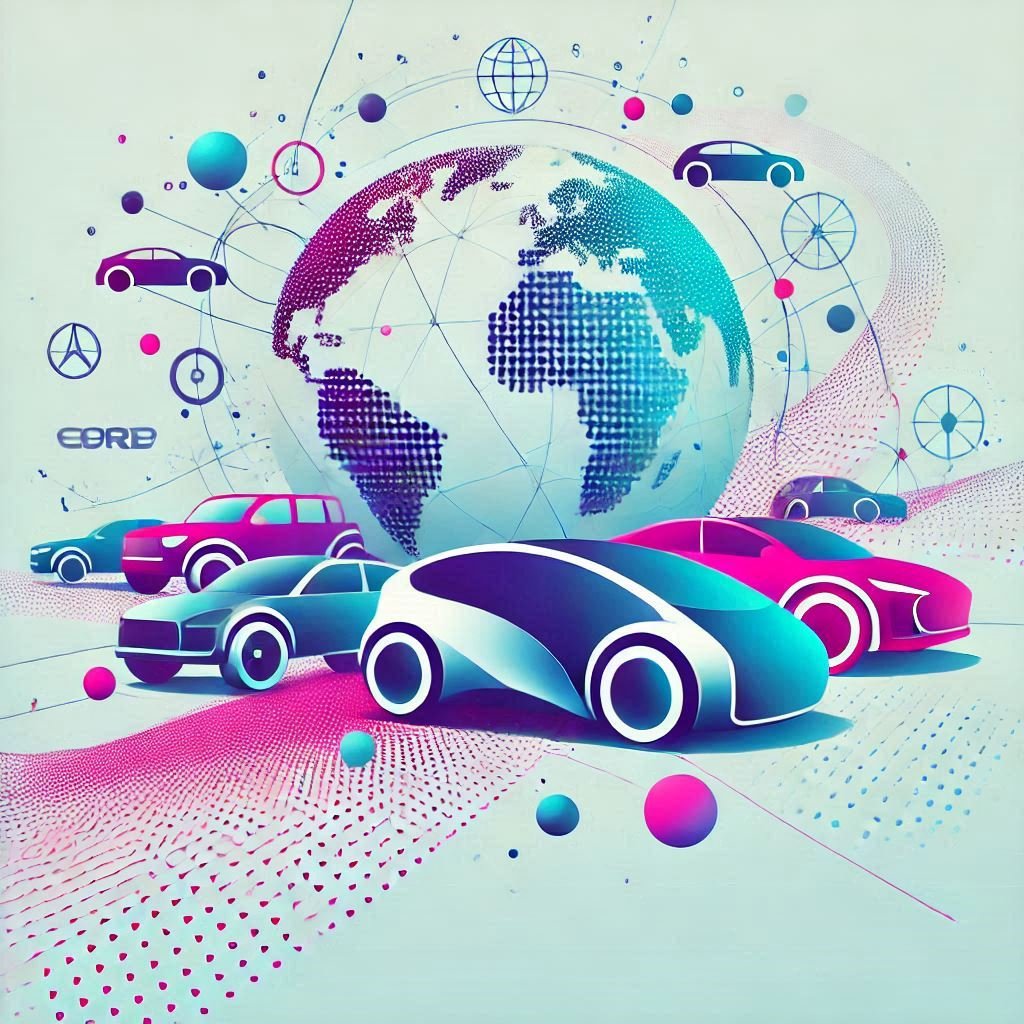Tesla, BYD, and the Legacy Auto Dilemma in the EV Race
The global automotive industry is undergoing a seismic shift, driven by the rapid adoption of electric vehicles (EVs). Traditional automakers, long-dominant in internal combustion engine (ICE) vehicles, are now competing in a new arena dominated by EV specialists like Tesla and BYD. This transition poses significant challenges for legacy manufacturers, who must balance their established ICE operations with the urgent need to innovate and compete in the electrification race. Meanwhile, Chinese automakers are emerging as formidable competitors, leveraging cost advantages, supply chain efficiencies, and aggressive pricing strategies.
Market Share Dynamics: A Shifting Landscape
In 2024, the global EV market reflects a growing divide between traditional automakers, specialist EV companies, and Chinese manufacturers. Traditional brands like Volkswagen (4.6%), BMW (3.6%), and Mercedes-Benz (2.6%) continue to expand their EV portfolios but struggle to compete with the dominant players.
Specialist EV makers like Tesla and BYD maintain their leadership in the battery electric vehicle (BEV) segment, though competition is intensifying. Tesla, with a 17.5% share of the global BEV market, remains the leader despite a slight decline in market share. BYD follows closely at 16.2%, narrowing the gap as it leverages vertical integration and cost efficiencies to scale globally.
Chinese manufacturers, including Geely (7.9%), Wuling (5.3%), and others, are reshaping the competitive landscape. Wuling’s success with budget-friendly EVs has bolstered SAIC’s market position, while Geely’s growing global presence underscores the strength of China’s domestic EV boom. These brands thrive on a combination of strong domestic demand, government incentives, and competitive pricing strategies that extend to international markets.
A notable trend is the pricing disparity for Chinese EVs between domestic and international markets. For instance, BYD’s Dolphin, priced at €12,947 in China, sells for €35,490 in the Netherlands—a 174% markup. Despite European Union tariffs of up to 38.1% on Chinese imports, companies like BYD maintain healthy profit margins, underscoring their cost advantages and the pressure they exert on competitors.
This evolving market share distribution highlights the challenges faced by traditional automakers as they adapt their legacy infrastructure to compete in a rapidly changing EV market. Specialist EV companies and Chinese manufacturers increasingly capitalize on their focus and innovative capabilities, signaling a potential shift in industry leadership as the 2020s unfold.
Challenges for Traditional Automakers
Traditional carmakers face a host of obstacles as they attempt to transition to electric mobility. Chief among these are high transition costs, intense competition, supply chain limitations, and the growing pressure to meet regulatory mandates.
High Transition Costs
Legacy manufacturers must overhaul factories, restructure supply chains, and invest heavily in workforce training for EV production. Unlike EV specialists, which built EV-focused infrastructure from scratch, traditional automakers are burdened by legacy costs. Additionally, significant R&D investments in batteries, motors, and software strain profitability.Brand Perception and Strategy
Traditional automakers are often perceived as playing catch-up in the EV race, making them less appealing to early adopters. Their ongoing commitment to ICE vehicles dilutes their focus on EV innovation.Limited EV Model Lineups
Many traditional automakers have been slow to expand their EV offerings. Early models often lag behind EV specialists in range, affordability, and performance, making it harder to capture market share.Supply Chain Issues
Dependency on third-party suppliers for batteries creates bottlenecks and increases costs for legacy automakers. EV specialists like BYD and Tesla, which produce batteries in-house, are better positioned to manage these challenges. Global disruptions, such as semiconductor shortages, exacerbate these issues for traditional manufacturers.Intense Competition
EV specialists dominate in innovation, cost efficiency, and scale. Tesla’s software integration and battery management systems lead the industry, while BYD’s vertical integration significantly reduces costs. Aggressive pricing strategies by these brands force traditional players to lower margins, further straining resources.Regulatory Compliance and Fines
Strict emissions regulations and government-mandated EV adoption targets present an additional hurdle. For example, the European Union’s fleet-wide CO₂ emissions targets impose fines on automakers whose sales fail to meet required EV percentages. This forces companies to ramp up EV production even before their technology, supply chains, and infrastructure are fully optimized.Balancing these mandates with ongoing ICE production compounds the challenge. Automakers like Volkswagen rely heavily on profitable ICE sales to finance their EV transitions, creating internal competition for resources and focus. Meanwhile, Tesla and BYD face fewer legacy constraints, allowing them to comply with regulations more seamlessly.
Future Outlook
The EV market is a double-edged sword for traditional automakers, presenting immense opportunities alongside formidable challenges. While legacy brands are accelerating their electrification efforts, they continue to grapple with structural disadvantages compared to EV specialists like Tesla and BYD. These specialized players operate with leaner supply chains, vertically integrated production, and a relentless focus on innovation, giving them a competitive edge.
The rise of Chinese automakers further complicates the landscape. Brands like BYD, Geely, and Wuling are leveraging cost efficiencies, government support, and aggressive global expansion strategies to disrupt markets traditionally dominated by European and American manufacturers. Their ability to offer competitively priced EVs, even with tariffs, underscores the growing pressure on legacy brands to adapt quickly.
For traditional automakers, success in the EV era will hinge on their ability to navigate these challenges. This includes overhauling legacy systems, securing sustainable supply chains, and refining their market strategies. Beyond technology, they must also build stronger EV brand identities to shift consumer perceptions and align with shifting regulatory demands. The race is on, and only those capable of rethinking their strategies and embracing transformation will secure a leading position in the electrified future of mobility.

